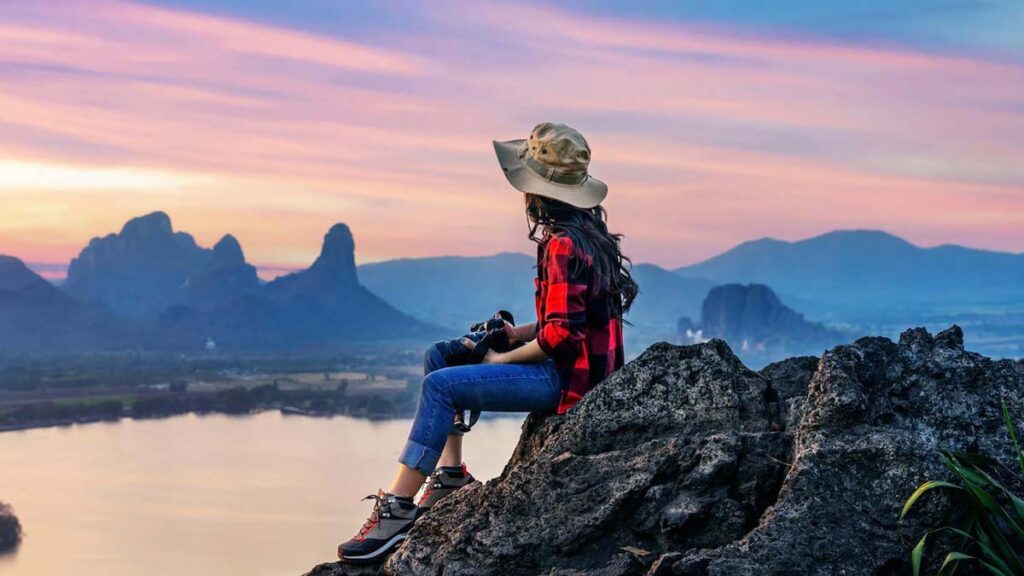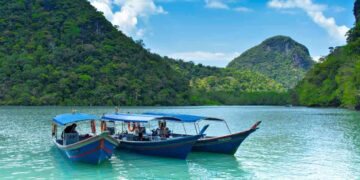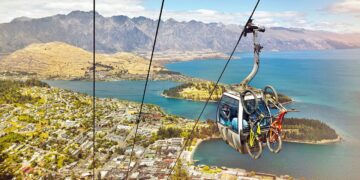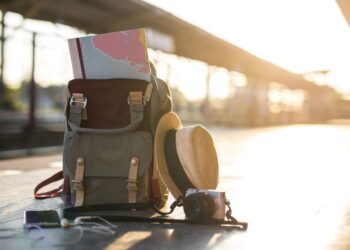Embarking on a journey alone is more than just a form of travel; it’s a profound odyssey into self-discovery, resilience, and unparalleled freedom. Embracing your Solo Spirit means stepping outside your comfort zone, detaching from external influences, and creating space to truly find yourself. This extensive article will delve into the transformative power of solo adventures, providing a comprehensive guide to planning, navigating, and maximizing these unique experiences, ultimately leading to a deeper understanding of your core being.
The Charm of the Solo Spirit
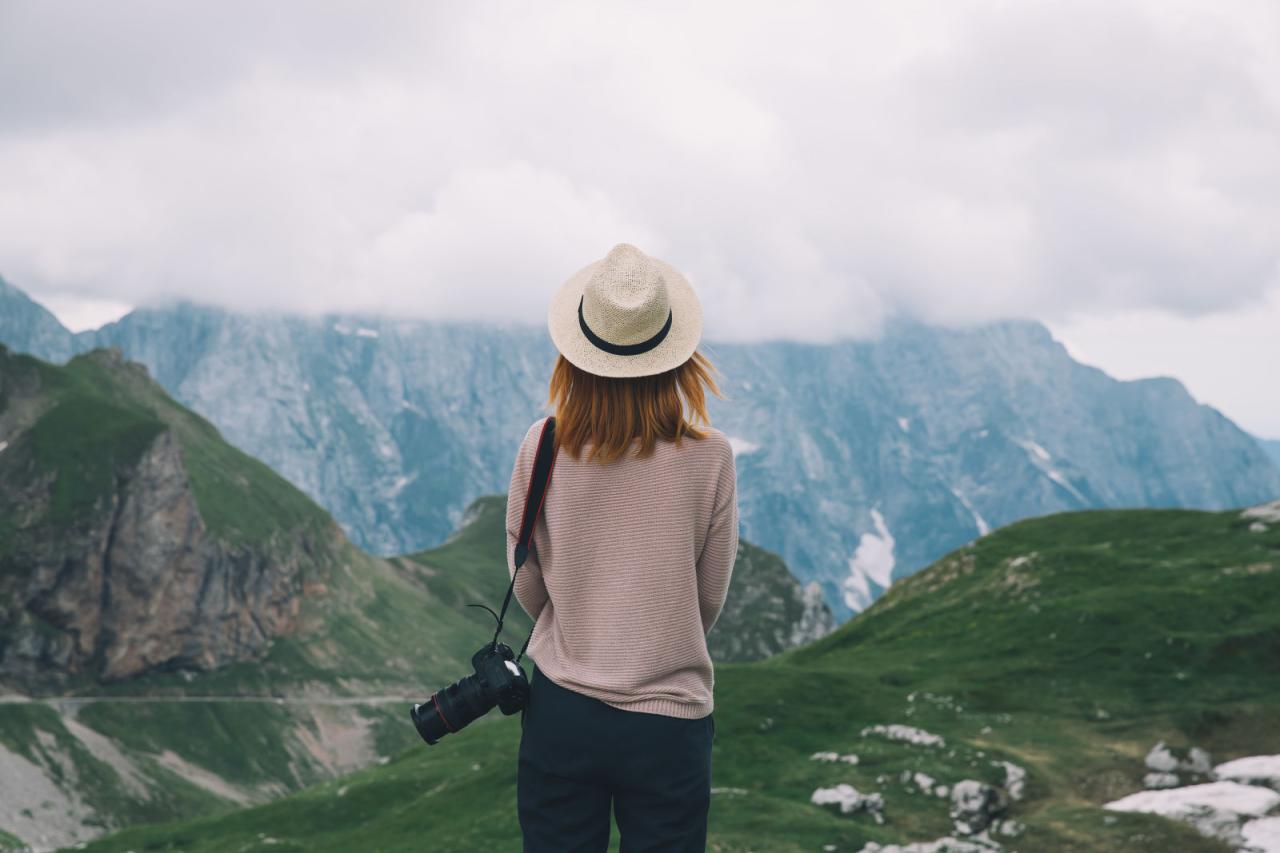
What compels individuals to choose the path of solitude for their adventures, often foregoing the comforts and shared experiences of group travel? The answer lies in the unique personal growth and profound self-connection that solo journeys offer.
A. Unrestricted Freedom and Flexibility: Traveling alone grants you the ultimate autonomy. Every decision, from where to eat to when to move on, is yours alone. This unburdened flexibility allows for spontaneous detours, deep dives into personal interests, and a pace perfectly tailored to your desires. There’s no need for compromise, only pure self-direction.
B. Accelerated Self-Discovery and Introspection: Without the constant presence of companions, you are forced to rely solely on yourself. This intense self-reliance pushes you to confront fears, solve problems independently, and truly listen to your inner voice. It’s an unparalleled opportunity for deep introspection, clarifying values, and understanding your true capabilities and limitations.
C. Heightened Awareness and Sensory Engagement: When you’re alone, your senses become more attuned to your surroundings. You notice subtle details in a landscape, pick up on nuances in local interactions, and savor flavors with greater intensity. The absence of conversational distraction allows for a richer, more immersive experience of the world.
D. Enhanced Problem-Solving and Resilience: Unexpected challenges are inevitable in any journey, but when traveling solo, you are the sole problem-solver. This sharpens your wits, boosts your confidence in your ability to handle adversity, and significantly builds your resilience for future life challenges. Every obstacle overcome is a testament to your capability.
E. Increased Opportunities for Authentic Connection: Paradoxically, solo travelers often find it easier to connect with locals and other travelers. You appear more approachable, and people are often more willing to strike up conversations or offer assistance. These unplanned interactions can lead to profound cultural exchanges and lasting friendships.
What Kind of Self-Discovery Awaits?
“Finding yourself” on a solo adventure can take myriad forms. Clarifying the intention behind your solo journey will help you choose the right path for your personal quest.
A. The Wilderness Solo: Confronting Nature, Finding Inner Calm:
1. Solo Backpacking/Hiking: Embarking on multi-day treks in remote wilderness, carrying all your essentials. This challenges physical endurance and fosters profound solitude and connection with nature. Think long-distance trails or remote mountain expeditions.
2. Solo Camping/Wilderness Survival: Spending time alone in nature, perhaps learning basic survival skills. This is about stripping away modern comforts and relying on elemental skills.
3. Solo Kayaking/Canoeing Expeditions: Navigating waterways independently, combining physical exertion with moments of serene tranquility and self-reliance on the water.
B. The Cultural Solo: Immersing Deeply, Expanding Worldview:
1. Language Immersion Stays: Traveling alone to a foreign country specifically to learn a new language, often through a homestay or intensive language school. This forces deep cultural interaction.
2. Local Apprenticeships/Workshops: Spending time learning a traditional craft (e.g., pottery, weaving, cooking) from local artisans. This provides structured learning and unique cultural insights.
3. Extended City Exploration: Dedicating weeks or months to exploring a single foreign city on your own, delving into its hidden neighborhoods, local markets, and daily rhythms far beyond tourist attractions.
C. The Spiritual/Wellness Solo: Inner Peace and Clarity:
1. Meditation/Yoga Retreats: Attending silent retreats or wellness programs designed for individual reflection and spiritual growth in a supportive, quiet environment.
2. Pilgrimage Routes: Walking ancient pilgrimage paths alone (e.g., Camino de Santiago). This combines physical challenge with deep spiritual or personal contemplation.
3. Digital Detox Escapes: Intentionally disconnecting from all technology in a secluded natural setting to foster mental clarity and reduce overwhelm.
D. The Skill-Building Solo: Mastering a New Challenge, Unlocking Potential:
1. Solo Photography Expeditions: Traveling alone with a camera, focused on honing your photographic skills and capturing unique perspectives. This encourages meticulous observation.
2. Writing/Artistic Residencies (Solo): Spending dedicated time alone in an inspiring location to focus intently on a creative project, free from daily distractions.
3. Adventure Sports Training: Traveling solo to a specific location to learn or master a new adventure sport like surfing, rock climbing, or paragliding, pushing personal boundaries in a focused way.
E. The Purpose-Driven Solo: Contributing and Finding Meaning:
1. Solo Volunteering: Traveling alone to volunteer for a cause or community project in a new country or region. This combines purpose with personal exploration.
2. Research Expeditions (Individual): Undertaking a self-directed research project in a specific field, requiring independent planning and execution in often unfamiliar territory.
Meticulous Planning for Freedom

While solo travel offers immense freedom, effective planning is paramount. It ensures your adventure is safe, rewarding, and truly transformative.
A. Crystal-Clear Intentions: Before you even choose a destination, define your “why.” What do you hope to gain from this solo journey? Self-discovery, a new skill, overcoming a fear, or simply absolute freedom? Your intention will guide every decision.
B. Thorough Research is Your Compass: Knowledge empowers your solo spirit.
1. Destination Safety: Research the safety of your chosen destination for solo travelers, especially for your gender. Read recent traveler reviews, consult government travel advisories, and understand local customs related to personal safety.
2. Logistics and Infrastructure: Understand transportation options (public transport, car rental, inter-city connections), accommodation types (hostels, guesthouses, hotels, unique stays), and communication facilities (SIM cards, Wi-Fi).
3. Cultural Nuances: Learn about local customs, appropriate dress codes, social etiquette, and basic phrases in the local language. Showing respect goes a long way.
4. Activity Specifics: If your solo journey involves specific activities (e.g., hiking a remote trail, learning a new sport), research necessary permits, gear, instructors, and safety protocols thoroughly.
C. Budgeting for Independence: Financial preparedness ensures freedom, not stress.
1. Detailed Expense Breakdown: Estimate all costs: flights, accommodation, food, local transport, activities, visas, travel insurance, and a substantial emergency fund (at least 20-30% of your total budget).
2. Solo Traveler Premiums: Be aware that some costs (e.g., hotel rooms) may not be cheaper for one person, unlike group discounts. Balance this with savings on group tours or shared experiences.
3. Payment Methods: Carry a mix of cash for small purchases, and multiple credit/debit cards (from different banks) in case one is lost or compromised. Inform your bank of your travel plans.
D. Safety and Security Protocols: Your well-being is the highest priority.
1. Share Your Itinerary: Provide a detailed itinerary, including flight numbers, accommodation details, and key activities, to a trusted friend or family member back home. Establish check-in times.
2. Emergency Contacts: Keep a list of local emergency numbers, your embassy/consulate information, and insurance details easily accessible (physical and digital copies).
3. Travel Insurance: Non-negotiable for solo travel. Ensure comprehensive coverage for medical emergencies, trip cancellations, lost baggage, and any specific adventure activities. Read the policy carefully.
4. Situational Awareness: Always be aware of your surroundings. Avoid walking alone at night in unfamiliar areas. Trust your instincts.
5. Secure Valuables: Use anti-theft bags, money belts, and hotel safes. Avoid displaying expensive items.
E. Packing for Self-Sufficiency: Every item counts when you’re carrying it yourself.
1. Lightweight and Versatile: Pack only essentials. Choose multi-functional clothing and gear to minimize weight.
2. Essentials: Chargers, universal adapter, power bank, first-aid kit, toiletries, reusable water bottle, a good book/journal.
3. Safety Gear: Depending on your journey, this could include a headlamp, whistle, small knife, or personal alarm.
4. Offline Resources: Download maps, translation apps, and essential guides for offline use.
Living Your Core Experience
Once you’re on your solo adventure, the focus shifts to mindful immersion and maximizing the unique opportunities that solitude offers.
A. Embrace Unscheduled Time and Spontaneity:
1. No Rigid Itinerary: While you have a plan, allow for spontaneous changes. The best solo discoveries often happen when you deviate from the script.
2. Follow Your Intuition: If a place feels right, stay longer. If something feels off, move on. Trust your gut.
3. Linger and Observe: Take time to simply sit, watch, and absorb your surroundings without the pressure of a companion. This is where true presence blossoms.
B. Engage with Your Senses and Surroundings:
1. Mindful Eating: Savor every bite, noticing the flavors, textures, and aromas.
2. Focused Observation: Pay attention to the details of architecture, the nuances of conversations around you, or the intricacies of natural landscapes.
3. Journaling: Regularly write down not just what you see, but how you feel, what you’re thinking, and any insights that arise. This is crucial for self-discovery.
C. Seek Out Meaningful Connections (When Desired):
1. Hostel Common Areas: For budget travelers, hostels are great for meeting other solo adventurers.
2. Local Classes/Workshops: Join a cooking class, a language exchange, or a yoga session.
3. Guided Tours (Short Ones): A short walking tour or day trip can be a great way to get local insights and meet people without committing to a full group trip.
4. Engage with Locals: A smile, a polite greeting in the local language, and genuine curiosity can open doors to surprising interactions.
D. Prioritize Self-Care and Well-being:
1. Listen to Your Body: Ensure adequate rest, nutrition, and hydration.
2. Process Emotions: Allow yourself to feel emotions—whether loneliness, joy, or frustration—without judgment. Use your journal as a safe space.
3. Digital Detox: Intentionally limit screen time to truly disconnect and connect with yourself and your environment.
E. Celebrate Small Triumphs:
1. Acknowledge Progress: Every successfully navigated challenge, every new discovery, is a win.
2. Build Confidence: These small victories compound, building significant self-confidence that extends beyond the trip.
Overcoming Challenges and Finding Strength
Solo adventures, while liberating, come with their own unique set of challenges. How you respond to these moments is where true self-discovery happens.
A. Combating Loneliness and Isolation:
1. Schedule Check-ins: Plan regular calls with friends or family back home to alleviate intense loneliness.
2. Seek Social Opportunities: Engage in hostel activities, group tours, or join local meetups if you crave company.
3. Embrace Solitude: Reframe loneliness as solitude—a precious opportunity for introspection and self-connection.
B. Handling Unexpected Problems (Logistical/Financial):
1. Stay Calm: Panic hinders clear thinking. Take a deep breath.
2. Problem-Solve Systematically: Break down the issue into smaller steps.
3. Utilize Resources: Refer to your emergency contacts, offline maps, travel insurance, or consult with hotel staff/locals. Your pre-trip planning is crucial here.
4. Trust Your Intuition: Often, your gut feeling can guide you to a solution.
C. Managing Safety Concerns:
1. Avoid Risky Situations: Trust your instincts. Avoid walking alone at night in unfamiliar areas, over-imbibing alcohol, or taking unnecessary risks.
2. Be Discretionary with Information: Don’t reveal your exact itinerary or solo status to strangers unless you feel absolutely comfortable.
3. Act Confidently: Even if you feel unsure, projecting an air of confidence can deter potential issues.
D. Coping with Homesickness or Self-Doubt:
1. Acknowledge the Feelings: It’s normal to miss home or question your decision.
2. Revisit Your “Why”: Remind yourself of your initial motivation and the growth you’re seeking.
3. Focus on the Present: Engage in an immediate activity to pull your mind back from negative thought spirals.
4. Connect Briefly: A short call home can often ease homesickness, but don’t let it become a crutch.
E. Language Barriers:
1. Utilize Translation Tools: Apps are helpful but also try to learn a few key phrases.
2. Patience and Gestures: Be patient, smile, and use body language. Most people appreciate the effort.
3. Embrace the Challenge: View it as an opportunity to push your communication skills.
Sustaining the Solo Spirit and Its Discoveries
The solo journey doesn’t end when you return home. The true transformation lies in integrating your newfound self-awareness and resilience into your daily life.
A. Deep Reflection and Integration: Give yourself time and space to process the profound changes.
1. Review Your Journal: Re-read your entries. What major insights did you gain about yourself, your capabilities, and your values?
2. Share Your Story (Selectively): Share your experiences with trusted friends and family who truly want to understand your growth. Focus on the transformation, not just the destinations.
3. Create a Memento: A photo album, a scrapbook, or a piece of art that symbolizes your solo journey can be a powerful reminder.
B. Apply Newfound Strengths to Daily Life:
1. Enhanced Problem-Solving: Use the resourcefulness and adaptability you honed on the road to navigate challenges at work or home.
2. Increased Confidence: Let your newfound self-reliance empower you to take on new projects, advocate for yourself, or pursue long-held dreams.
3. Deeper Self-Awareness: Maintain the practice of introspection and listening to your inner voice. Understand your needs and boundaries better.
4. Greater Appreciation for Connection: After periods of solitude, you might find a renewed appreciation for your relationships.
C. Managing Re-Entry and Reverse Culture Shock (If Applicable):
1. Patience: It’s normal to feel a bit out of sync. You’ve changed, and the world around you may feel the same but you are different.
2. Gradual Reconnection: Ease back into routines and social obligations. Don’t rush.
3. Find Local Echoes: Seek out ways to continue your solo spirit at home (e.g., exploring local hidden gems, solo walks, learning new skills).
D. Inspire Others (Thoughtfully):
1. Share Your Journey: Your story can empower others to consider their own solo adventures.
2. Offer Advice: Share practical tips for solo travel and self-discovery.
3. Content Creation: If you enjoyed documenting, consider creating a blog, podcast, or social media content focused on solo travel and personal growth, attracting a wider audience and potentially generating passive income.
E. Plan Your Next Solo Adventure: The completion of one solo journey often plants the seeds for the next.
1. Maintain a “Solo Dreams” List: Keep a running list of places or experiences you want to explore alone next.
2. Leverage Lessons Learned: Use the wisdom and confidence gained from your previous trip to plan an even more profound solo journey.
3. Embrace Continuous Growth: Recognize that the journey of self-discovery is lifelong, and solo adventures are powerful accelerators of this process.
Conclusion
Embracing your Solo Spirit is an act of courage, liberation, and profound self-love. It’s the ultimate pathway to truly find yourself, stripping away distractions and external influences to reveal the resilient, capable, and uniquely individual core of who you are. By planning meticulously, navigating challenges with grace, and mindfully immersing yourself in every moment, you transform a simple trip into a life-altering odyssey. So, listen to that quiet whisper within, pack your bags, and step boldly into the exhilarating unknown. Your most profound discoveries await, simply by daring to go alone.

